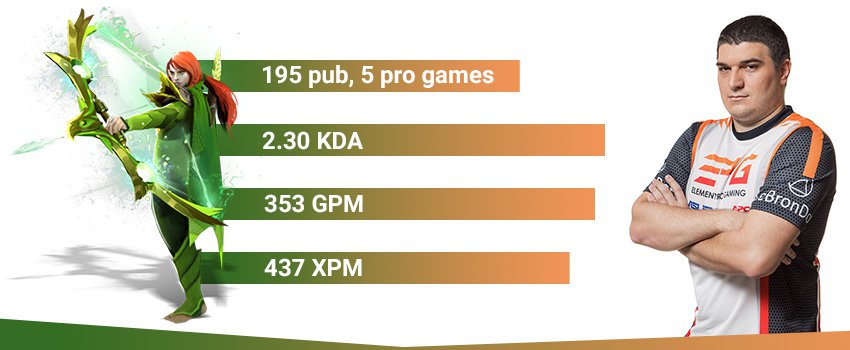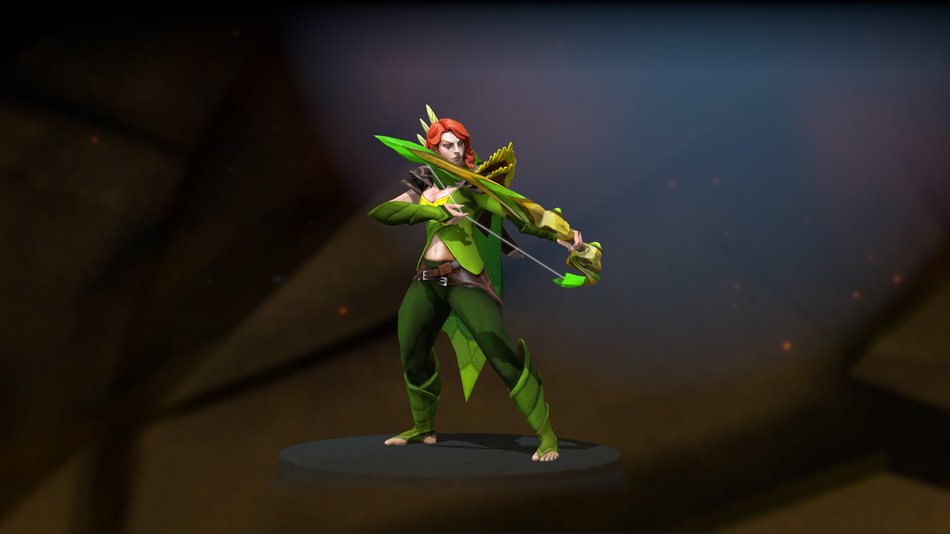Mechanics:
- The projectile gives 400 range flying vision, which lingers for 3.34 seconds; combined with the long range, this makes PS a great scouting tool;
- The projectile destroys trees within 75 radius, allowing you to create new paths in the tree line;
- The channeling sound effect is heard only by your allies;
- The initial projectile speed is 3000, but it gets reduced by 10% for each enemy hit; this is important to consider only if you are trying to hit a long-range PS through the enemy creep wave;
- The projectile animation speed doesn’t reflect this change; it always seems to fly with 3k units per second;
- Each 0.01 second of channel increases the damage by 1%, reaching 100% at 1.0 sec;
Use for damage:
The most common use of Powershot is that of a normal AoE nuke. In fact, in the early game it is your primary source of nuke damage and consequently – kill potential.
Use the range: PS is very useful to finish kills after enemies have gotten out of your attack range. This is especially true in the mid/late game since you wouldn’t want to channel Powershot at close range – you would want to hit with attacks. The drawback of this use of PS is that it is predictable and easier to dodge.
Use setup: There is always a possibility that your target will juke your Powershot. Therefore, the most reliable way to land it is to channel while the target is stunned. You can set up for yourself by using Shackleshot first and then a Powershot to ensure that you will deal the maximum damage. Of course, you can do the same with any stun.
Use short channel Powershot: If your target sees you channeling, it is likely to try to dodge. A low damage Powershot is better than a no damage Powershot, so the best thing to do in such situations is to cancel the channeling before your target exits the hit area.
Use for utility:
There are two aspects of utility Powershot gives you: Vision and tree-cutting.
The visual aspect is always useful for scouting (e.g. Rosh attempts). In the late game, it becomes more important than the damage, as your Focus Fire attacks deal way more DPS than PS.
The tree cutting aspect is most useful for juking. You can cast an instant Powershot while running (no need to channel as you are not using the damage) to cut through a line of trees and create a new path. Entering it will hide you in the fog and for a few seconds will make it harder for your opponents to kill you. Of course, they can still continue chasing you through the new path in the trees.
Creating such a path could also situationally be useful for ganking. You can preemptively cut a line in the trees and afterward use it to engage your enemies from an unexpected angle.
Aiming:
Like all skill shots, you need to predict the movement of your target in order to hit Powershot. The projectile speed is quite fast, so hitting a short-range PS is relatively easy (especially if you cancel your channeling). At long range, however, you need to aim more carefully:
The projectile takes about 1 second to reach max range and the channeling time of a full damage PS is also 1 second. This means that if you are firing a max range max damage PS, you need to aim at the location where your target will be in 2 seconds. The closer the target is, the lower the delay and the closer you need to aim to its current position.








